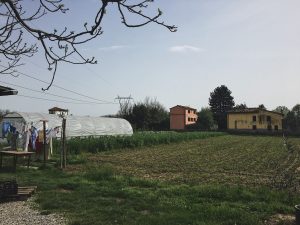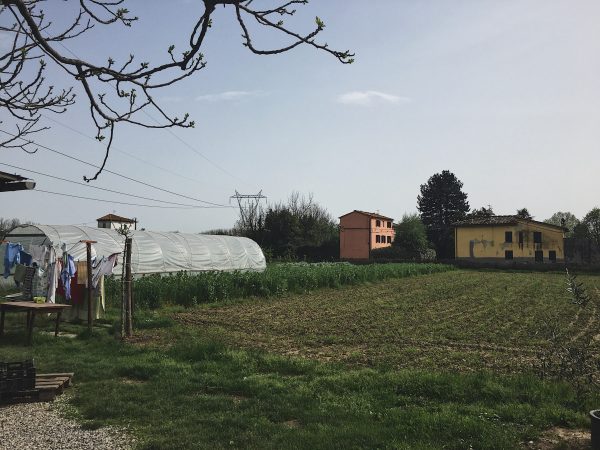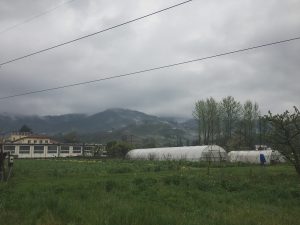The first time I heard the term “biodynamic” to describe a style of farming I was handed a glass of wine
and the person handing it to me said something along the lines of “This wine is amazing, it’s biodynamic. I love biodynamic wines.” The word might as well have been spoken in a foreign language because I had no
idea what he meant by that, was it a type of grape? Was it the processing? When I inquired for more information about this mysterious word that somehow made that particular bottle of wine notably superior to bottles of wine that lacked this essence, the wine giver’s answer did not quite encompass the full meaning of biodynamic. They told me it has to do with farming practices based around the moon’s cycle and burying cow horns in the ground.

This was two years ago, and in that time frame when people brought up biodynamic farming I was never given a more detailed answer than the first person’s response, until a week ago when I arrived in Italy and began to unravel the complex web that is biodynamic farming. Regardless of their ability to articulate what biodynamic practices are, all of the folks who I spoke with about biodynamic farming consistently mentioned how amazing this style of farming is for the earth. Okay, so I really needed to get to the bottom of this, I needed to know what the deal was with themoon and the cow horn, which perhaps was my biggest driving force on this discovery quest.
Now I have found myself living on a biodynamic farm for four weeks, fully immersed in a Tuscan lifestyle and I am not complaining, mostly because it’s beautiful and as delicious as one can imagine (mangia mangia is no joke), but also because my Italian is poor at best, so I couldn’t complain even if I had something to complain about. As I’ve discussed in the prior post I’m on the farm Nico, which Federico and Elena bought in 2006 and transformed into a thriving biodynamic farm by 2010. Federico was trained in biodynamic farming by Alex Podolinsky, who was originally from Russia, but ended up in Australia after growing up in Germany, England, and Switzerland. Podolinsky is most noted for his contributions to making biodynamic farming more accessible to
farmers as well as recognizing that plants have two systems of intake, one that is for water and the other that is for nutrients. Getting back on track, biodynamic farming is a holistic approach to farming, the farmer asks what can I give to the land rather than how much the land can give to the farmer, and in return the land answers by giving back. It’s the antithesis of conventional agriculture and goes beyond organic farming (though biodynamic farming is organic, organic farming is not always biodynamic, sort of like a square is a rectangle, but a rectangle is not a square.)

There is plenty to cover on biodynamic farming, but from my understanding the most important aspect is soil health. Biodynamic farming looks at the soil as if it were its own living organism and thus must be treated as a living being. The main goal is to transform dead land into thriving humus. What is humus? It’s soil that is incredibly black due to its carbon content with a deep earthy smell and is created by compositing organic materials in a very particular way that allows the growth of bacterial and mycorrhizae, while encouraging worms to inhabit the compost which mixes the compost while adding more richness, it contains a lot of nutrients and holds water well for plants, it maintains the structure of the soil, it creates a better environment for seed germination, and provides some pretty tasty vegetables. I know this because I have been eating these delicious vegetables for the past two weeks. How does one achieve these magical properties? Through a few different methods that I will be discussing in multiple posts as to not overwhelm the reader. There is a lot going on here and it’s not a simple answer like NPK. While I reflect on my prior biodynamic discussions I can understand why they were not as detailed, but why so many people seem to appreciate this practice. In the upcoming posts I will discuss the preparations that are essential to biodynamics, compost systems, companion planting, seed saving, insects, the influence of the moon, and probably more. Stay tuned to find out about the cow horn situation.

